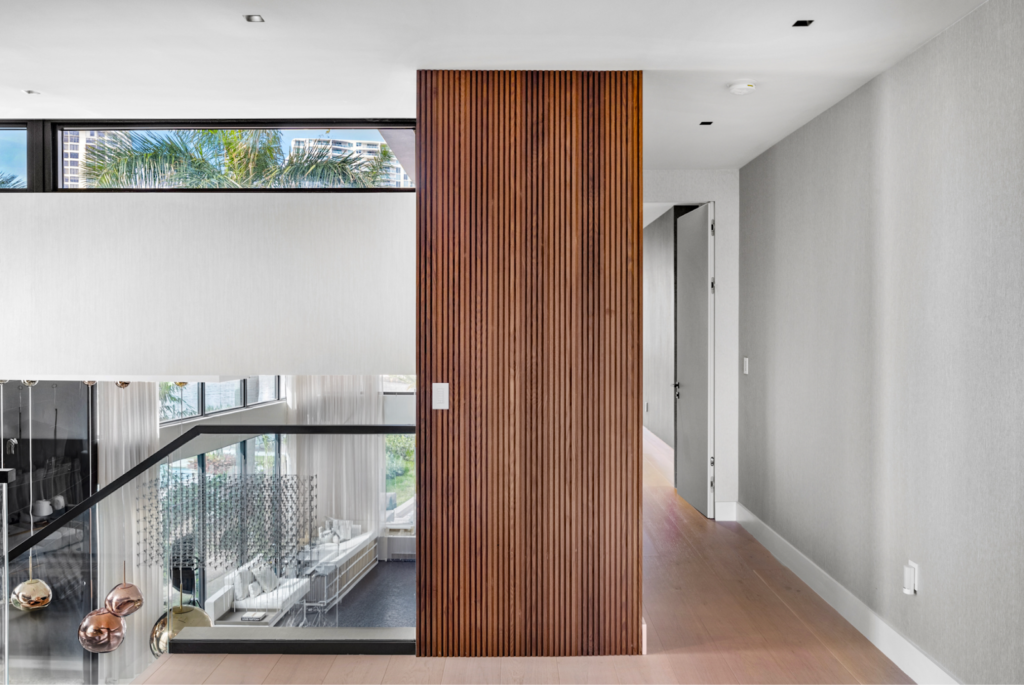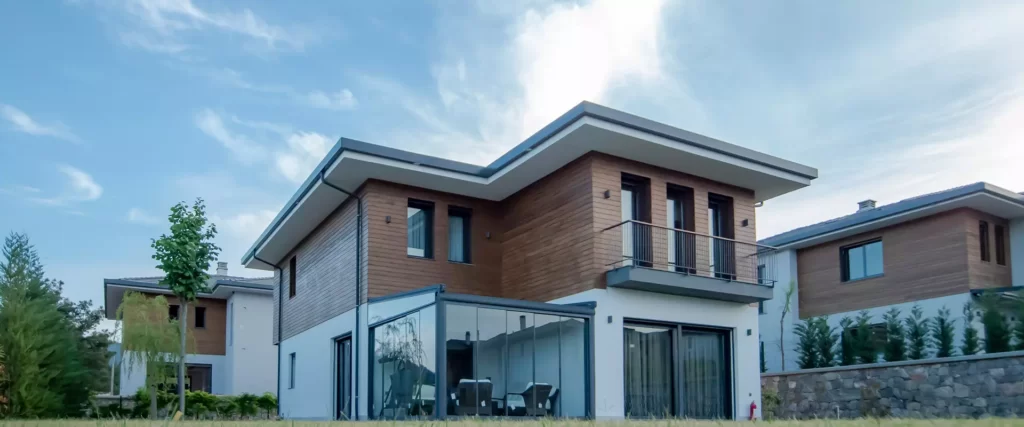Thermally modified wood is increasingly valued by builders, contractors, and designers, especially those who seek sustainable, durable materials for modern construction.
Why? Because the thermally modified wood process strengthens wood while reducing its environmental impact.
And if you want to learn more about how to thermally modify wood effectively, keep reading.
Understanding Thermally Modified Wood
Thermally modified wood undergoes a carefully controlled heating process, during which extremely high temperatures transform the wood’s internal structure.
This process significantly enhances its resistance to moisture and biological decay—without using any chemical treatments.
And as a result, the thermally modified wood offers increased dimensional stability, which means:
It resists swelling and shrinking, making it particularly suitable for outdoor environments.
The Thermally Modified Wood Process

The thermally modified wood process involves several key stages, which are:
1. Drying and Initial Heating
During the first phase, the wood is gradually heated to eliminate moisture, preparing it for the higher temperatures that follow.
This step ensures that the wood reaches a near-zero moisture content—a critical factor in achieving the desired stability.
2. High-Temperature Treatment
In the next phase, the wood is heated to temperatures ranging from 356°F to 413°F (180°C to 212°C) in a low-oxygen environment to prevent combustion.
This process—known as thermal modification—triggers hydrolysis, a chemical reaction that breaks down hydroxyl groups within the wood’s cellular structure.
These hydroxyl groups typically attract water and, thus, lead to swelling, shrinking, and decay.
But by disrupting this process, the wood’s ability to absorb moisture is significantly reduced and improves its dimensional stability.
Increased Durability Through Heat Treatment
The heat also converts the wood’s natural sugars into compounds that fungi and insects can no longer use as a food source.
This transformation also leads to greater durability and resistance to biological threats. The result?
A thermally modified wood that excels in outdoor applications. But the best part?
The thermal modification process darkens the wood and gives it a rich color that mimics exotic hardwoods and makes it visually appealing for both exterior and interior uses.
Comparison with Other Treatments
While hydrolysis reduces moisture absorption and improves dimensional stability, it differs from other common wood treatments, such as pressure-treated wood.
And unlike pressure-treated wood, which relies on chemicals to resist decay and insects, thermally modified wood achieves durability purely through heat.
This makes it a more eco-friendly and safer option for projects focused on sustainability.
3. Cooling and Conditioning
The final stage involves gradually cooling the wood to restore its moisture balance. This process helps prevent cracks or splits and ensures the wood remains strong and flexible for years to come.
The end product is not only resistant to moisture but also maintains its structural integrity even in challenging environmental conditions.
Best Species for Thermally Modified Wood: Pine, Ayous, and Ash
Each species of thermally modified wood offers unique benefits, and choosing the right species can also help you accomplish your specific goals. Here’s a closer look at the most popular options:
Thermowood Pine
Thermowood Pine is a lightweight option that is excellent for exterior applications like cladding and decking. Its thermal modification process improves its durability and allows it to perform well in modern designs.
And its natural aesthetic appeal helps you withstand various weather conditions.
Thermowood Ayous
Thermowood Ayous—sourced from West Africa—is known for its uniform texture, and it is highly valued in both exterior and interior applications.
The wood’s smooth texture and ability to absorb stains and finishes make it a popular choice for designers and architects who seek flexible, sustainable building material.
Thermowood Ash
Thermowood Ash is favored for its strength, which makes it a premium choice for exterior cladding and decking.
It has a distinct grain pattern that offers a sleek, knot-free finish, adding a touch of elegance to any project. And it’s known for performing exceptionally well in environments exposed to harsh weather and weather changes.
Applications of Thermally Modified Wood
The versatility of thermally modified wood makes it suitable for a wide range of applications, from exterior cladding to interior design. Here are a few examples:
- Cladding and Siding: Thermally modified wood provides long-lasting protection against weather conditions and adds a rich, natural aesthetic to building exteriors.
- Decking: The durability and resistance to moisture make it a preferred material for outdoor decking. Contractors appreciate that it requires minimal maintenance while still delivering an attractive appearance.
- Interior Design: The refined look of species like Thermowood Ayous and Thermowood Ash enhances interior spaces and offers a warm, natural feel for furniture, paneling, and cabinetry.
Building Sustainably with Thermally Modified Wood
But thermally modified wood helps different species support sustainable building practices.
Because the thermally modified wood process avoids chemical treatments and relies solely on heat, the wood is 100% recyclable and safe for the environment, which means:
By choosing thermally modified wood, contractors and designers are not only opting for a longer-lasting material but also making a responsible decision for the planet.
Moreover, the extended lifespan of thermally modified wood reduces the need for frequent replacements, which translates to fewer resources consumed over time.
Use Wood that Undergoes the Thermally Modified Wood Process

When selecting thermally modified wood, it’s important to weigh factors like durability, moisture resistance, and environmental sustainability.
Whether you’re looking for wood interior or exterior applications, just remember:
Wood that undergoes the thermally modified wood process is structurally designed to last longer and, overtime, can save you money.

